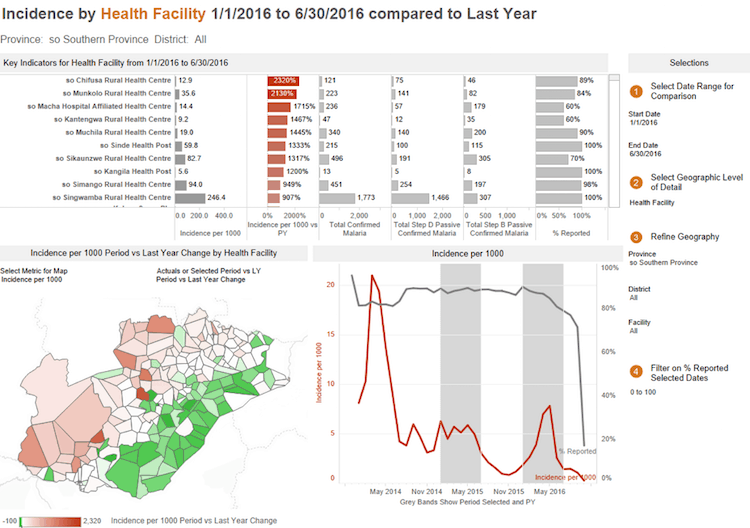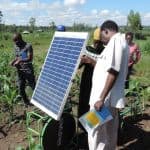Bending the Arc of Humanity – Effective Development of Exponential Technologies to Serve Mankind
In 2007, my coauthors and I started exploring the impact of information technology in emerging markets. Our book, “Technology at the Margins: How IT Meets the Needs of Emerging Markets,” shared what was then, in 2009, innovative use of technology for education, health, finance and the environment. What we found was very encouraging; people in poor economies were adapting to technology, using mobile for creating economic opportunities. The sterling example then, and to some extent now, is MPesa (the Kenyan mobile money product), which was leading the way in providing poor people an opportunity to save and transfer money using their mobile phones. This gave rise to an industry around mobile banking opportunities throughout emerging markets. The Bill and Melinda Gates Foundation subsequently launched its Financial Services for the Poor program, building the tracks on which the commercial mobile banking system could operate and service millions of poor people around the world.
Jessica Rothenberg-Aalmi, one of my coauthors, went on to found Cell-Ed, a mobile language training technology company that delivers essential skills micro-lessons to workers over any mobile device – even flip phones – and a complete mobile solution for employers and education providers to reach, retain and train them.
Over the last several years, however, we are seeing the rise of exponential technologies such as big data, the internet of things (IoT), artificial intelligence (AI), 3D printing, blockchain, synthetic biology and robotics. According to Peter Diamandis and Steven Kotler, in their book “Abundance: The Future is Better than You Think,” they are quite positive that these technologies will have an impact on society – not merely hype on blogs and news sites. They discuss issues of dematerialization, demonetization and democratization of technology, and how they are creating a turbulent period of “pre-abundance.” They also caution that some of us will become super users of these exponential technologies – “the super haves” – adapting to these technologies quickly and deriving the benefits. But there will also be others who are going to be left behind – “the super have-nots.” Those of us working in the social impact space will have to take on the mantle of exponential leaders and assume the role of bridge builders between the haves and have-nots. George Bernard Shaw said, “Reasonable people adapt themselves to the world. Unreasonable people attempt to adapt the world to themselves. All progress, therefore, depends on unreasonable people.”
So, let me share where I am seeing progress in bridging the gap and effectively developing solutions using exponential technologies to accelerate social transformation.
Big Data, Big opportunities – Big Pitfalls
Amy Webb, in her book “The Signals Are Talking: Why Today’s Fringe Is Tomorrow’s Mainstream,” equates data to the next oil. Webb notes that it took the world until 2013 to generate 5 exabytes of data, while now 5 exabytes of data are created every two days. There is clearly an opportunity to drill, mine and refine data, and then build it into other products. Companies like Alibaba, Apple, Amazon, Baidu, Facebook, Google, IBM, Microsoft and Tencent are at the forefront of controlling this data and creating business solutions with it. Over the last several weeks we have seen the potential pitfalls of our data being exploited, which is giving caution to many about how much data should be public and freely available. Further, how can we manage this flow of data to benefit the poor and put controls in place for them to not be further exploited?
However, there are examples of business intelligence and data being effectively used. Software company Tableau and PATH, an international health organization driving transformative innovation to save lives, are working together to eliminate malaria in Zambia. In partnership with other companies, Tableau employees and “Zen Masters” (power Tableau data visualization software users) are providing vital software, training and funding in support of Zambia’s goal of eliminating malaria by 2021. This partnership has trained district and facility health teams to combat the disease at the community level. These Ministry of Health employees are using data visualization tools to map malaria cases during the rainy season, predict who might be carrying the virus and treat them before an outbreak. In doing so, they have reduced the incidence of malaria outbreak in the south of the country. (See image below).

The Potential of Artificial Intelligence
In “The Future Computed: Artificial Intelligence and its Role in Society,” published by Microsoft, we learn of potential applications of AI to tackle major societal issues. The four areas where AI has significant promise are:
- Agriculture: By 2050, farmers must produce more food, on less arable land, and with lower environmental impact to feed the world’s rapidly growing population. AI can help people efficiently monitor the health of farms in real time. This is widely viewed as “data-driven farming,” a term we should add to our collective lexicon.
- Biodiversity: Species are going extinct beyond the natural rate by orders of magnitude. AI can help people accelerate the discovery, monitoring and protection of biodiversity across our planet. Data can also predict disease spread and plan responses earlier.
- Water: In the next two decades, demand for fresh water is predicted to dramatically outpace supply. AI can help people model Earth’s water supply to help us conserve and protect fresh water. Focused machine learning can provide faster, more effective and lower-cost land cover mapping tools.
- Climate Change: Increasingly variable climates threaten human health, infrastructure and natural systems. AI can provide people with more accurate climate predictions to help reduce potential impact on communities.
FarmBeats is a project supported by Microsoft that is using IoT and AI to provide farmers with a real-time understanding of their farm conditions, allowing them to make better decisions, manage their farms, reduce water usage and generate better yields. The data acquisition subsystem of FarmBeats takes information from sensors and drones, analyzes it, and provides a precise view of the farm conditions. The real opportunity is figuring out how to eventually deploy these technologies in emerging markets where poor farmers – particularly those cultivating plots of one acre or less – are benefiting from these exponential technologies, so they can continue to compete with larger farmers, feed the world and keep their lifestyles intact.
Clearly, technology is not a panacea. However, the potential for effectively using exponential technologies continues to increase, rural connectivity continues to improve with low-orbit satellites, TV White Spaces, etc., and the opportunity to use IoT, data visualization and AI will grow. The question will be: Who in the development sector will be unreasonable enough to push the boundaries and build the bridges between the “super haves” and the “super have-nots”?
Akhtar Badshah is founder and chief catalyst at Catalytic Innovators Group. He also serves as curator of the Accelerating Social Transformation program, which is accepting registrations for its 2018 sessions in Silicon Valley and Seattle.
From left to right: Racheal Mokosha, district malaria focal person; Ephraim Sikalundu, data collector; and Vincent Munsaka, community health worker, in Harmony village in South Zambia. They are part of the team logging cases of malaria across the province. Photo: Gabe Bienczycki, PATH
Homepage photo credit: Pexels.com.
- Categories
- Social Enterprise, Technology



